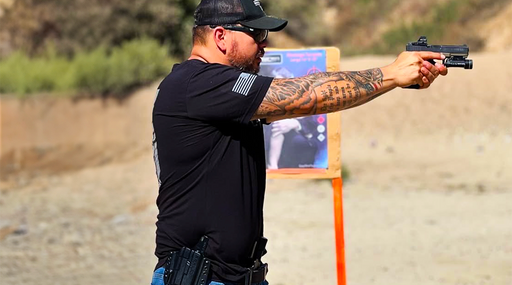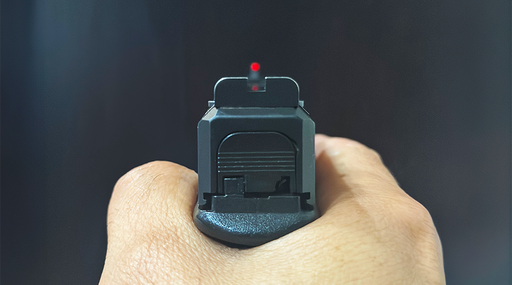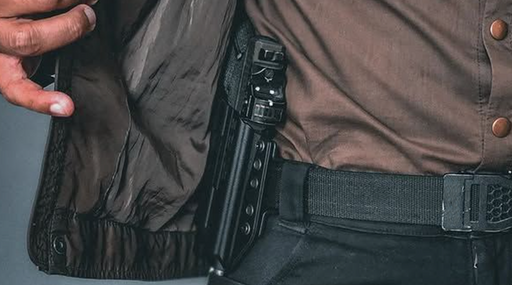
Selecting your next handgun might be a big enough decision if it’s a new one. There’s the anticipation of wondering if it’ll suit you for daily carry and/or range work as well as you’re hoping, and perhaps finding just the right holster. And then there’s the financial hit that for some makes a new gun a big decision. Often for reasons related to finances, but many times also due to conversations about guns that started at the range and ignited interest, many people consider purchasing a used gun. Is that a smart move? This article gives some points to take into account before forking over money for a used gun.
Legal Transactions
Some jurisdictions have laws that criminalize the sale of a firearm between individuals when the exchange is not overseen or conducted by a federally licensed firearms dealer (FFL). Know the law in your state and only do trades or purchases that you are comfortable doing. By saying this, I am making the distinction that complying with unconstitutional laws (well, any law really) is a choice. Even if there is no regulation against a private sale, many people prefer to pay a fee for an FFL to document it. That transaction will include a criminal record check on the buyer and create a permanent record with the Bureau of Alcohol, Tobacco, and Firearms (ATF, or AFT as the person currently wearing the Commander-In-Chief label has ineptly called it). It will also include a check on the serial number of the firearm, and flag the transaction if the gun is known to be stolen. Does a serial number check guarantee the gun wasn’t stolen? No; many stolen guns’ serial numbers are never reported to police (who in turn report that information to ATF’s database).
If you prefer to conduct a private transaction but want to do your best to confirm the gun’s history, the website HotGunz.com is a public database where you can do your own search of a serial number.
Now, it goes without saying that keeping it legal means inspecting the frame to ensure that no serial numbers have been filed off. In my personal opinion, such a purchase is to be avoided, as criminal activity is implied by virtue of erasing this identifying information. If a gun with an altered/erased serial number is later taken into evidence after I’ve used it in personal defense, that fact alone is likely to reflect negatively on my legal case.
Inspecting Parts
A gun with very little mileage is usually easy to identify. The slide’s finish will be uniformly smooth with little to no “holster wear.” Countless guns that have wear on the finish from regular carry can be virtually new where it counts, on the inside. Field strip the gun or ask the seller to do this for you, especially if it’s a showroom-worthy firearm. Inspect the interior of the slide; this is where a high round count will have discolored or removed some bluing or whatever finish the gun has. That doesn’t have to be a deal-breaker, but is an indication of past use and how long it’ll be until the gun needs a new recoil spring and/or guide rod or extractor. Swab out the barrel if the gun’s not clean, hold it up to the light, and check that the lands (the smooth interior of the barrel, sans the spiral grooves) bear no egregious scratches nor gouge marks from improper maintenance tools or ammo-related catastrophes.

Police agency guns are frequently offered for sale via gun stores or online brokers. Some have significant holster wear but very little actual use. These often represent a great value, as they’ve generally been subjected to regular cleaning and lubrication. Most vendors who sell such guns have purchased a dozen or more of the same model at a time, and can provide a good description of individual guns when asked. Don’t be shy about asking for details. These vendors can be found both online and at local walk-in stores, but these deals are generally not found from big-name companies with publicly traded stock.
Sights, front and rear, are apt to loosen, break, or be replaced with aftermarket parts. Inspect the sights carefully. Grasp each and try to move it. No movement should be felt. If a sight is loose or if the channel where one might be set shows gouging from inept smithing, do more investigation. If the sights are tritium and having tritium is important to you, find a dark place to confirm that the tritium is indeed still working—if the sights are less than 10 years old, that shouldn’t be a concern. Wiggle any rings, inserts, and so on that may be features of the sights to ensure they’re solid. Sight issues don’t have to be a deal-breaker, but the need for repair or replacement is a good negotiation point. A new set of sights will usually cost $75-125 depending on brand, assuming the gun is a model for which replacement sights are readily available. If there is an issue with the sights, and you can’t find replacements for that model, consider passing on the deal unless you have sentimental or other non-performance related reasons for purchasing.
Inspect the entire frame and grips, if the gun has them, for cracks or, on a polymer gun, places on the trigger guard or grip that have been sanded to dangerously thin proportions. Frame cracks are an immediate deal-breaker, unless the gun is to be used only as decoration. Thin polymer that’s been altered can affect function if it’s on the grip. Thinned trigger guards are subject to breaking. I would not buy a gun that’s had this type of alteration for daily carry or duty use unless I knew the person who did the work and their track record. For recreation or casual sport, frames altered permanently in this way can be considered, especially if you can also fork out money for a replacement lower later on.
Grip panels on guns that have them deserve similar inspection. They should not wiggle. Cracking or even broken panels don’t have to be a deal-breaker, but are a negotiation point, so long as you can confirm the attachment points on the frame are solid. Have a gunsmith to check this if you’re not sure.
Minor rust on any part is a solvable matter and, for a gun that’s not a showboat, not something I’d consider a dealbreaker. But address this issue as soon as you buy the gun by removing the rust and taking lubrication/protectant measures to prevent recurrence. Rust propagates and ruins a gun when left unchecked.
Finally, check trigger function by dry firing. If the gun is equipped with a magazine disconnect, you’ll need dummy ammunition or must use live fire to be sure the trigger works. Again, a non-functioning trigger is not necessarily a deal-breaker if you really want the gun, but it represents a major negotiation factor as replacement parts and possibly smithing will be required.
If you’re dedicated to using a narrow choice of ammunition, especially a custom load, it’s wise to arrange for a test firing of the gun with your ammunition to be sure It feeds reliably. This is less important with striker-platform guns than with many that are hammer-fired. The latter are often created with tighter tolerances, which ironically can render them less “tolerant” of certain loads.
Warranties and ugly surprises
If warranties are important to you, find out if the manufacturer offers a transferable warranty and whether the gun is still covered age-wise. This is something you can usually check using the manufacturer’s website or the gun’s user manual. Remember to follow up on submitting proof of ownership according to the manufacturer’s rules if you want to implement a warranty.
Some people think they won’t have any problems if they just buy a new gun, and most of the time they’re right. But there are many, many exceptions, and I have personally seen brand-new guns break in front of my eyes—in one case before even being loaded. This has happened with more than one household-name manufacturers’ and less well-known budget companies’ guns. I’ve seen major new-gun failures with a $3,000 gun, a $275 one, and almost every price point between. Manufacturers make mistakes once in a while. Do your research regarding a specific company’s expedience in honoring warranty claims, especially if a new gun will be your only one, and you rely on it daily.
In short, a used gun can be a reliable, enjoyable partner for a very long time if you select well for the job you expect it to do. One of my favorite guns is a tan Glock 23 that I bought slightly used, sold about a year later, and missed so badly that my beloved found a way to help me buy it back from its “new” owner four years later.
There are some points that may be important to others that are not included here. But the factors shared above should keep you in good stead on a used gun purchase. Do you own a favorite handgun that you bought used? Tell us about it in the comments.
Thanks to Courtesy Sporting and Pawn, my local FFL, for allowing me to take photos in-store.























Leave a comment
2 comments
I got my license to carry firearms recently since I wanted one so I can stay safe and have self-defense measures ready now that I’m living alone, which is why I need a handgun of my own soon as well. I appreciate your advice when you told us to inspect the entire frame and grips of the used gun first before purchasing since we don’t want the gun to break when we need to use it. I’ll keep this in mind while I look for used guns for sale here in Lockwood soon. https://daddyospawn.com/new-guns-and-ammo/
Thank you for informing us that we can usually check transferable warrantees through the manufacturer’s website or the user manual provided. I recently got my carry permit approved, so I plan to buy a handgun to use for self-defense since I often get home from work late. I’ll be sure to remember this when I visit a gun shop this weekend for my purchase. https://gngsports.com